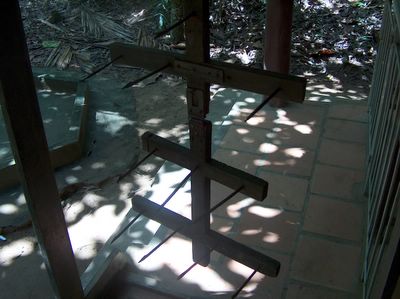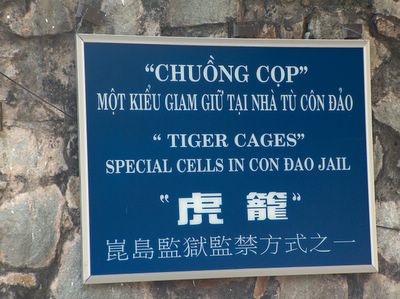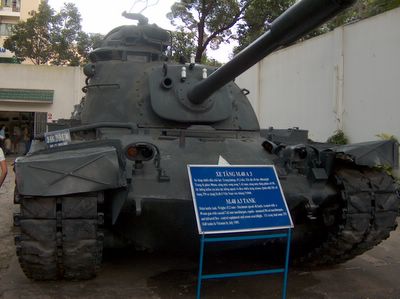The Cu Chi Tunnels
40 Km northwest of Saigon (HCMC) are the Cu Chi tunnels. The tunnels were used by the Viet Cong to hide supplies, hide from the Americans, and contained hospitals and living quarters.
Here's an entrance to the tunnels

For some reason, a size 12 1/2 shoe is about the same size as the entrance. I don't think I'll fit

Another tunnel entrance
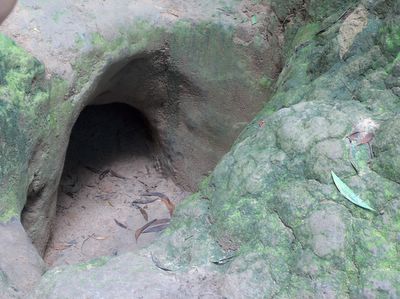
There was a section that was widened to fit the larger Western body size. I decided to take a pass on going in the tunnels. It was hot as hell, my eye was really bothering me, and I wasn't about to squeeze into a hole in the ground.
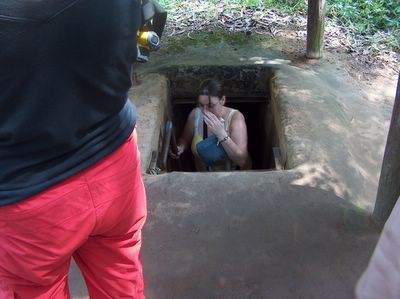
This is a cut away section of the tunnels. 
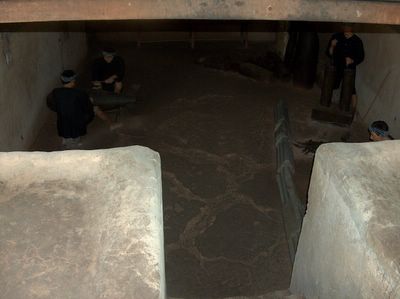
The Viet Cong took unexploded US ordnance and used it for various booby traps. 
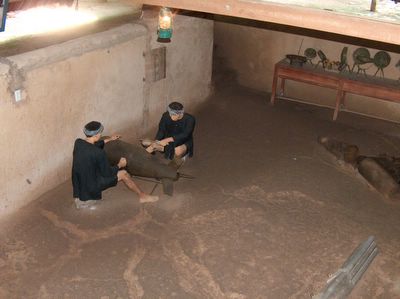
A close up of the VC making booby traps in the tunnels. 
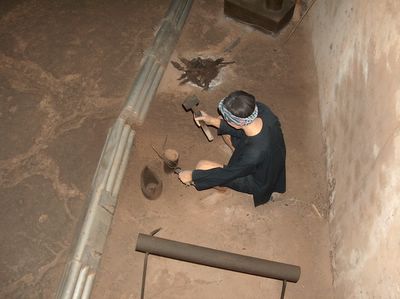
Imagine that this is covered with more leaves. Looks like the jungle floor right? 
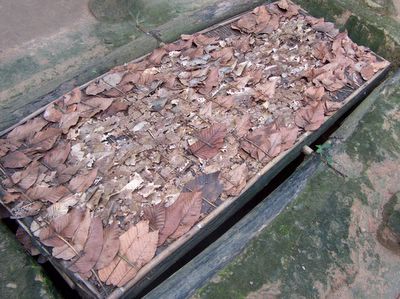
Wrong! 

This would just ruin your day. I can't imagine getting an arm or a leg caught in this. I forgot to ask whether this was put in the tunnels or in the jungle, but this would just suck.

Same with this one. 
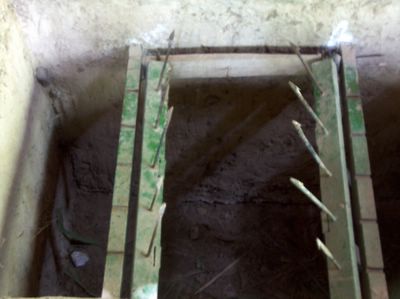
Or this one too. 
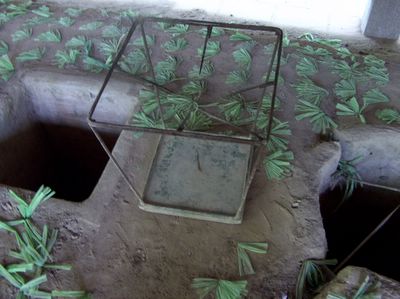
More examples of booby traps. 

Ouch, ouch, ouch. 
